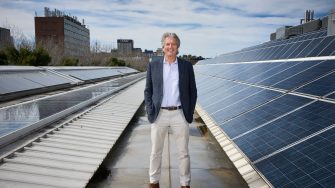
What is the societal challenge?
Global warming and the effects of climate change are threatening our planet at an alarming rate. Increasing temperatures over time are changing weather patterns and disrupting the usual balance of nature. This poses many risks to life on Earth. For more than a century, humans have burnt fossil fuels (oil, natural gas, and coal) to generate electricity, and to power transportation and industrial processes. The production and use of fossil fuels generate large quantities of carbon dioxide that trap heat in our atmosphere, leading to rising temperatures across the globe and climate change.
If we are to mitigate the effects of climate change, the global community must replace fossil fuels with cleaner, renewable energy sources such as wind and solar.
Project lead
Scientia Professor Martin Green
- Project collaborators
- Find out more
- Australian Centre for Advanced Photovoltaics
- Australian Government, Australian Renewable Energy Agency
- ISES, International Solar Energy Society
- Australia PV Institute
Contact us
If you have any questions or suggestions regarding the Societal Impact Framework or the consultation process, please get in touch.
